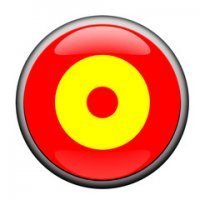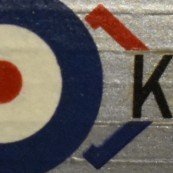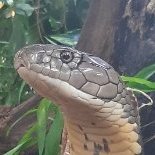-
Posts
450 -
Joined
-
Last visited
About jimmaas

- Birthday 28/08/1947
Contact Methods
-
AIM
jimmaas
-
Website URL
http://
-
ICQ
0
Profile Information
-
Gender
Male
-
Location
Clifton Park New York USA
-
Interests
Brewster Buffalo WW I, PBYs Martin B-10
Recent Profile Visitors
4,397 profile views
jimmaas's Achievements

Established Member (3/9)
577
Reputation
-
Ex- PATWING 10? Because the bespoke MLD Cats were all the 28NE PBY-5 ,equivalent. And if it is a PATWING 10 calico paint job, I'm unaware if anyone has tracked them done for sure.
-
jimmaas started following Tamiya 1/48 B-339 Buffalo , First to Attack - Finished , Academy #2179 1/48 Boeing P-26 Peashooter and 5 others
-
Wow! Just twigged to this build, and have copied in entirety in hopes that my partially build Hudson gets off the Shelf of Doom. I did approach the fuselage depth problem by inserting a long skinney wedge fron the tail to about 2/3rds of the way forward. Congratulations Peter on a wonderful build!
-
Plodding along (this GB end in November of WHAT year again?) with more clarification of the nose/engine details. First, the exhaust stack area is indicated by a shallow indentation, where photos show a sharp edge, so carefully cut out a rectangle on each side (Wilkinson razor blades work a treat!) and insert a channel made up of plastic strip.
-
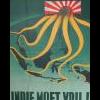
Academy #2179 1/48 Boeing P-26 Peashooter
jimmaas replied to 2996 Victor's topic in Lesser Known Manufacturers Classic GB
Here's a shot from Wikimedia showing the rubber covering on the underside of the stabilizers: -

Academy #2179 1/48 Boeing P-26 Peashooter
jimmaas replied to 2996 Victor's topic in Lesser Known Manufacturers Classic GB
I would go with silver/aluminum with the usual black crackle finish for the instrument panel. Artificial Intelligence pops up an answer of bronze green which is a later color (and proof that AI ain't). From tenuous memory of a P-26 build many years back, the fuselage locating holes for the upper bracing wires should be a bit higher than those on the kit. Also, the undersurface of the tailplane usually had an angled rubber cover, to protect against debris abrasion. -

Williams Brothers. Curtiss Sparrowhawk
jimmaas replied to Jb65rams's topic in Lesser Known Manufacturers Classic GB
Re decals - you might try contacting Wayne Tevlin in Montrose, PA. Try the Yellow Wings website. https://store.yellow-wingsdecals.com/ -

Mind the GA-P: Buffalo Mk.I, Hobby 2000 1/72
jimmaas replied to Marcel's topic in Ready for Inspection - Aircraft
Nice build! The Buffalo is also one of my favorites. -

Hobbycraft 1/48 Sea Fury Korean war.
jimmaas replied to stevej60's topic in Lesser Known Manufacturers Classic GB
Airfix Attacker? -
Well, start of the project, and a few items cut off the backing but one of the things I noticed is that the gun troughs were a bit indistinct. So, measure out areas to cut out and insert plastic tubing and once the tubing goes in, seal the edges with superglue and let set. When dry, we'll see if sanding down the tubing will yield a proper trough.
-
With a bit of trepidation, I'm going to attempt my first Group Build (while admitting glaciers move faster). Haven't cut plastic but have been gathering references on this less-than-stellar fighter (the designation means 'Pursuit Biplace') in the glorious tradition of the Roc, Defiant, and other fighters that somehow needed a gunner in the back.
-

112 Squadron Tomahawk II markings. Looking for info/confirmation
jimmaas replied to stevehnz's topic in Aircraft WWII
That may be possible. The regulation for spinner color in the original MAP patterns was Dark Earth. That is often obscured by the recognition marking colors applied - black for Fighter Command, red for Middle East, Sky for the Nov 1940 spinner/rear fuselage band order for Fighter Command. But the Dark Earth spinner pops up elsewhere, such as on the British order for Brewster 339E Buffalos, when not overpainted by section colors. -
Warning - the fuselage is a little wider than the rear canopy. A bit of sanding/test fitting is called for.


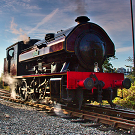

(510x640)-Copy(95x120).thumb.jpg.33073138e01aa81779639a845926753e.jpg)

